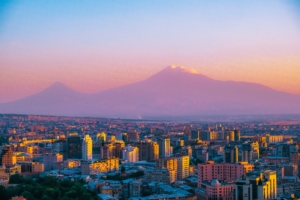Innovation and Development in Armenia: Success and Optimism
 In 1991, Armenia experienced transformation into an independent democratic state from a once Soviet Socialist Republic. Despite impressive reductions in poverty, the country has faced difficult times throughout its turbulent history. Most of the recent news out of the mountainous nation has centered around its troubling conflict with Azerbaijan, greatly neglecting the sucessful development in Armenia.
In 1991, Armenia experienced transformation into an independent democratic state from a once Soviet Socialist Republic. Despite impressive reductions in poverty, the country has faced difficult times throughout its turbulent history. Most of the recent news out of the mountainous nation has centered around its troubling conflict with Azerbaijan, greatly neglecting the sucessful development in Armenia.
Background
The current situation in Armenia is complicated: although the nation has seen its Human Development Index increase by more than 20% since 1991, more than a quarter of Armenians were still living below the poverty line in 2019 and every third child is currently living in poverty. These consequences can be partially attributed to the trend of over-reliance on a few sources of prosperity, such as the export of commodity goods, tourism and financial services, which has restricted the opportunities available in the country to working-age individuals and their children.
Furthermore, Armenia had the largest agriculture sector as a proportion of GDP among Eastern Europe and the South Caucasus (EESC) countries at 11% in 2021. The need for modernization and diversification is key to Armenia’s development success and the nation has solid foundations for continued poverty alleviation to be achieved. Armenians can look within for inspiration, with exciting, high-value industries such as the ICT sector proving to be catalysts for new growth and innovation. This highlights the importance of sustained innovation, education, opportunity creation, creativity and modernization for the ongoing development success of Armenia.
Government Initiatives
The Ministry of High-Tech Industry seeks to capitalize on Armenia’s high-tech potential by improving education in the sector. This initiative aims to attract influence from foreign high-tech specialists and establish a National Venture Fund to provide grants and support for startups in the country.
Armenia typically struggles with high outmigration. So, supporting bright young prospects as soon as they enter the labor force may lead to further innovations and the growth of new markets in the country. Furthermore, the arrival of tech specialists from Russia has “opened up new opportunities, with the potential to positively affect start-up creation, investment and growth of the ICT sector.”
The Ministry is also planning to increase the digital literacy of the general population through digital education programs and the widespread expansion of high-tech communication services. This is to ensure public digital literacy, improve accessibility to digital services for persons with disabilities and ensure the availability of a fixed internet connection.
Armenia has a legacy of “entrepreneurial culture and pockets of innovation excellence, such as the information and communication technology service exports sector.” Therefore, “strengthening innovation will play a central role in ensuring the country’s sustainable development, building a solid foundation for its transition to a knowledge-based economy.” New sources of growth for Armenia’s economy will inevitably bring some relief to the worst off in society, as the nation will be able to move away from things such as remittances from Russia to boost GDP, which usually only benefit the better-off.
NGO and International Efforts
The European Bank for Reconstruction and Development laid out its priorities in its 2019-2024 country plan for Armenia. It is prioritizing increasing the ability of small- and medium-sized enterprises to grow and add value, broadening access to finance, in particular for underserved segments and improving economic governance and greater competition. It will aim to achieve these goals by providing direct financing to SMEs, supporting the introduction of innovative technologies, bringing together and working with various financial interest groups and improving the quality of legal, institutional and regulatory frameworks that competition authorities can tackle monopolies.
Furthermore, The United Nations Development Program (UNDP) has been doing great work in Armenia. This includes investing in small and medium-sized enterprises, supporting local start-up initiatives and tourism development. The program is actively boosting entrepreneurism, developing a future-proof labor market and improving preparedness for shocks in rural communities. Through the promotion of technology-based education, re/up-skilling and upgraded public service models, the livelihoods of nearly 30,000 people have been strengthened to date.
Conclusion
While Armenia continues to work through difficult circumstances, the country is full of exciting initiatives seeking to push it far beyond simple subsistence.
– Arshiya Eslamdoust
Photo: Unsplash
